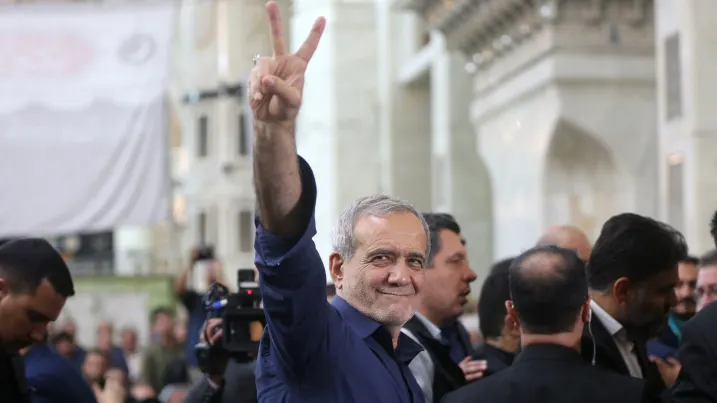Iran’s New President: Hopes for Reform Amidst Significant Challenges
Despite being described as a “token reformist” and a “second-tier candidate” by many analysts, 69-year-old Pezeshkian, a former heart surgeon, has emerged as Iran’s new president. His rise to power is unexpected, given his perceived slim chances at the presidency. However, his election does not necessarily signal imminent or sweeping changes for Iran. As Pezeshkian prepares to take office, the nation’s future remains uncertain, shaped by internal and external pressures.
Background and Perception
Pezeshkian’s candidacy was initially viewed with skepticism. Many analysts considered him a long shot, noting his lack of significant political clout compared to other contenders. Described as a “token reformist,” Pezeshkian’s reputation as a “second-tier candidate” underscored the doubts about his potential to effect meaningful change. His background as a heart surgeon, while impressive, did not immediately suggest the political gravitas required to navigate Iran’s complex political landscape.
Challenges Ahead
As president-elect, Pezeshkian faces formidable obstacles. One Iran analyst told CNBC, “The president-elect faces substantial challenges from entrenched hardliners and external pressures, making his presidency a critical and uncertain chapter for Iran’s future.” This statement encapsulates the dual fronts on which Pezeshkian must operate: the internal resistance from conservative factions and the international scrutiny and pressure on Iran’s policies.
Internal Resistance
The entrenched hardliners in Iran’s political system represent a significant barrier to any potential reforms Pezeshkian might propose. These conservative elements are deeply rooted in the country’s power structure, particularly within the judiciary, military, and clerical establishments. They have historically resisted reformist agendas, viewing them as threats to the status quo and the theocratic principles upon which the Islamic Republic is founded.
External Pressures
In addition to internal challenges, Pezeshkian must contend with significant external pressures. International relations, particularly with Western nations, remain strained over issues such as Iran’s nuclear program and its involvement in regional conflicts. Sanctions and diplomatic tensions have placed Iran in a precarious position on the global stage, complicating efforts to enact domestic reforms or foster economic recovery.
Relative Reformism
In Iran, the term “reformist” is highly relative. While Pezeshkian is seen as a reformist figure, his stance is moderate and cautious. He has expressed no intention to challenge the country’s theocratic system, which remains a cornerstone of Iranian governance. Instead, his approach seems to be one of gradual and limited change, aimed at addressing specific issues without provoking a backlash from hardline elements.
The Road Ahead
Pezeshkian’s presidency is poised to be a critical and uncertain period for Iran. His ability to navigate the intricate web of political, social, and economic challenges will determine the extent to which he can implement his agenda. Key areas of focus will likely include improving the economy, addressing social grievances, and managing international relations.
Conclusion
The election of Pezeshkian as Iran’s new president has sparked cautious optimism among some who hope for reform. However, significant change remains distant given the substantial challenges he faces from both internal hardliners and external pressures. As Pezeshkian steps into this pivotal role, his presidency will be closely watched as a bellwether for Iran’s future direction. Whether he can overcome the entrenched obstacles and make meaningful strides remains to be seen, making this a critical juncture in Iran’s ongoing political evolution.

